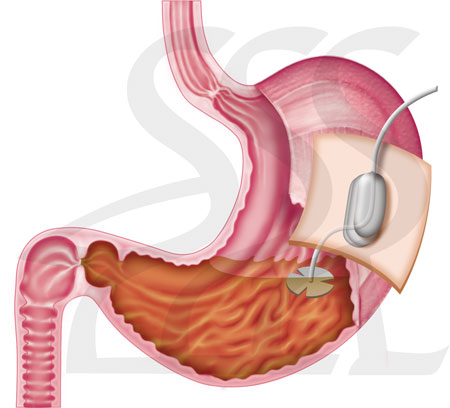

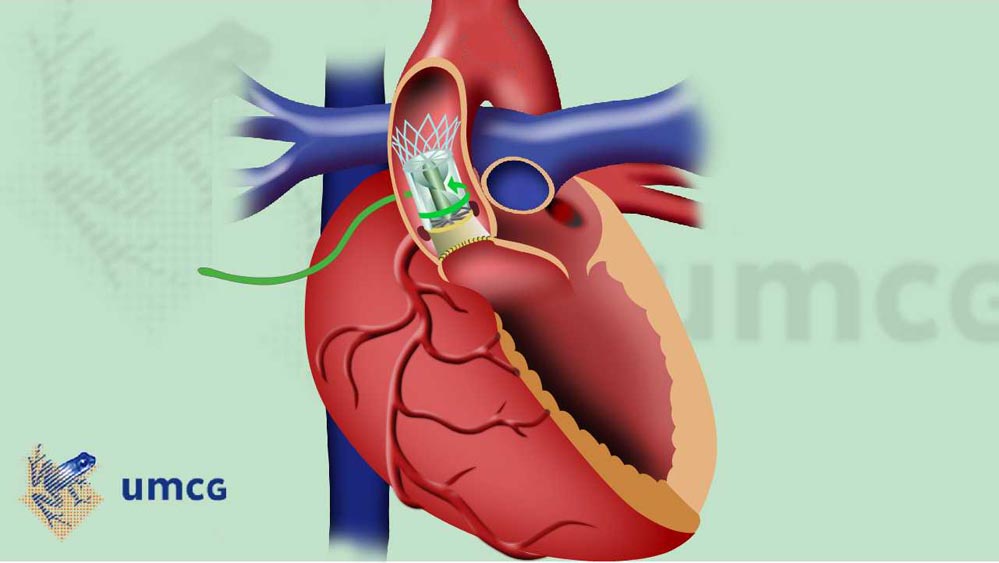
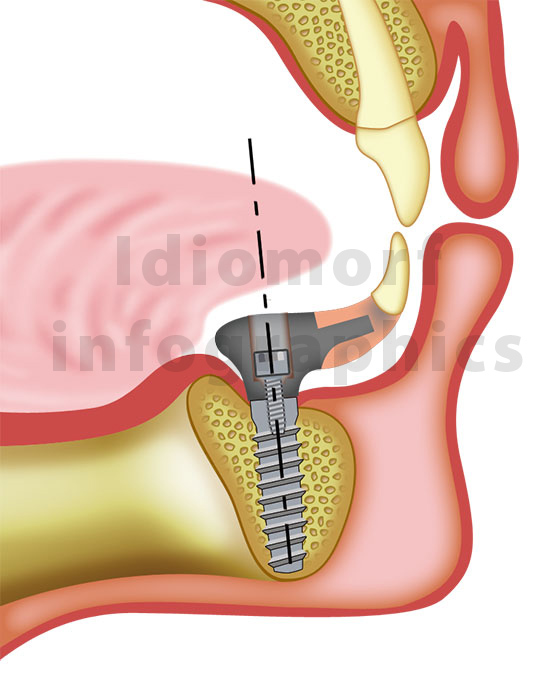
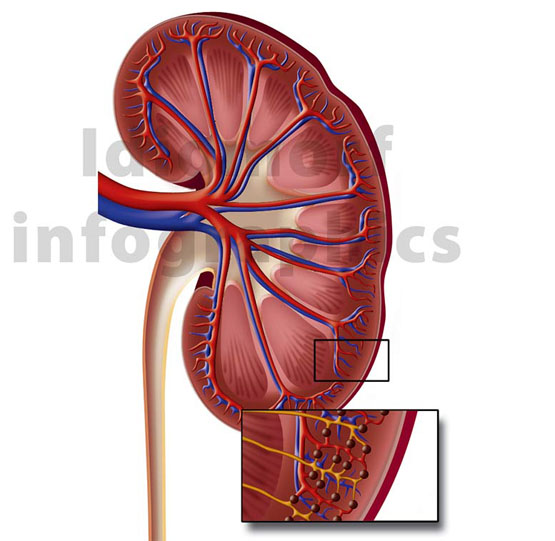
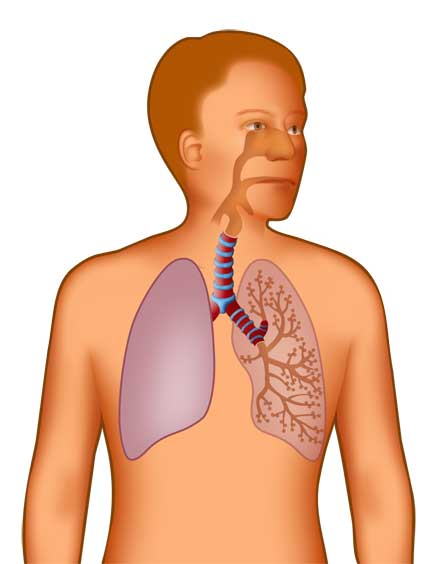
Portfolio medical drawings and medical animations
This overview page shows a number of examples of medical illustrations and medical animations. This gives you an impression of Idiomorf’s illustration services regarding visualisation of medical sciences. Click on one of the tiles to see the whole picture.
Human body
Of all natural subjects, the human body is the most difficult to draw. After all, the human body is complicated. Moreover, one organ often hides another, so that photography is not an option. The development of the medical illustration technique is therefore inextricably linked to progress in medical science.
Proven expertise
Because errors and imperfections in the documentation of medical and pharmaceutical devices can have very serious consequences. Quality control is essential. By carefully developing accompanying medical illustrations for medical devices. Proven expertise in the field of pharmaceutical products, and years of drawing experience in this medical scientific field. Idiomorf can be of decisive importance in this branch. Idiomorf infographics enables the leading pharmaceutical companies to achieve their globalisation. Goals with a wide range of services in the field of interactive visualisation can help you to transfer information. This is how Idiomorf offers:
Minimise risks through the use of illustrations and animations
Supplying companies with consistent quality and accuracy of all printed and electronic medical illustrations and -animations for instructions for use, atlases, reference books and leaflets. Aim: to minimise risks through the use of illustrations and animations;
Illustrations for training in medical instruments and equipment. This is to ensure that products are used and maintained correctly. For salespeople to ensure that training is completed faster and leads to better sales results.
Medical illustrations as education
Medical illustrations and visualisations of medical examination methods clarify the working of e.g. medicines but also standardise medical procedures. Idiomorf offers an up-to-date flexibility and knowledge. especially in the field of informative visualisation that is needed to provide products with accurate documentation. This can be done for several markets all over the world without a lot of translation work. Moreover, Idiomorf reduces costs by offering easy set-up of documentation material.
Possibilities
This turn opens up a range of new possibilities for applications for interactive digital media for medical education and information methods. Medical drawings and visualisations of research methods and depicts the working of e.g. medicines. Medical illustraton is a profession on its own. Idiomorf’s medical illustrations are used in information materials, drug information leaflets. But also in medical books and teaching materials or for the manuals of medical equipment. Our medical illustrator works in close cooperation with the client. Together, we consider the requirements that the medical illustration should meet. Please contact us for more information or examples of our medical illustrations.
History of medical anatomical drawings
The medical drawings that appeared before the Renaissance were mainly schematic in nature. After that time, these anatomical drawings became increasingly realistic. With the rise of medical science, the human body was examined and mapped out more and more systematically at the universities. The creation of anatomical theatres, such as the one at Leiden University in 1594/95, made an important contribution to the development of anatomical drawings. In these theatres, the cutting open of human bodies. Could be followed by interested parties and thus also by illustrators. One of the illustrators who gave a new impulse to the drawing of medical subjects is the Italian Leonardo da Vinci (1452-1519). He relied exclusively on his own perception and drew what he saw himself. His drawings are characterised by realism.
Profession of a medical illustrator
In the late 1700s, scientists increasingly concentrated on the study of diseases and disorders. In addition, in the course of the nineteenth century, more and more specialisations arose. Medical drawings played an important role in conveying the new scientific medical knowledge in theses and articles. New colour printing techniques made it possible to clearly visualise details of pathological abnormalities and to disseminate information about them. This made the profession of a medical illustrator more versatile. The improvement of printing techniques made it possible to reproduce medical drawings more and more realistically. This demanded more drawing skill from the illustrator. To train these skills many medical illustrators received training in drawing from artists’ associations. The Leiden anatomical illustrator Gerard Sandifort gave a course in dissection for visual artists for the Leiden artist association Ars Aemula Naturae.
Medical information with illustrations
Research shows that more and more people have a great need for reliable (medical) information. Especially in health and illness with clear medical illusrations. The Internet is increasingly used as the main source for obtaining this medical information. Almost every question about health and illness can be answered with the help of clear medical drawings and medical animations. Often the anatomical drawings are clarified with texts and pictures. Idiomorph developed medical drawings and medical animations for information websites. In cooperation with (semi) public organisations and the business community.
Cooperation
The scientific association of general practitioners (NHG) provides information on health complaints and disorders. They are common in primary health care. The 2ZW Information Centre, part of the Netherlands Institute for Care and Welfare, provides descriptions of diseases that are mainly seen in secondary care (including hospitals). Publishing house Het Spectrum makes the Winkler Prins Medical Encyclopaedia available, while Idiomorf is responsible for a large number of medical illustrations. The Trimbos Institute and the Oranje Kruis provide medical information about the most common psychological disorders and First Aid for Accidents respectively. In 2006, Idiomorf expanded the ‘medical information’ and supplemented it with interactive medical animations and illustrations linked to digital decision aids.

6 replies on “medical illustrations”
A lot of the things you say is supprisingly accurate and that makes me ponder the reason why I hadn’t looked at this with this light before. Your piece really did switch the light on for me personally as far as this issue goes. Nonetheless there is one position I am not necessarily too comfortable with and while I make an effort to reconcile that with the main idea of the position, permit me observe what the rest of the readers have to point out.Nicely done.
Thank you for your interest. What can I do for you?
Lookingforward to your reply,
Andries Hof
You are a very smart individual!
Thank you for your interest. What can I do for you?
Lookingforward to your reply,
Andries Hof
Hi there! Would you mind if I share your blog with my zynga group? There’s a lot of folks that I think would really appreciate your content. Please let me know. Many thanks
Thank you for your interest in out expertise. You kan share this blog. Best regards, Andries Hof